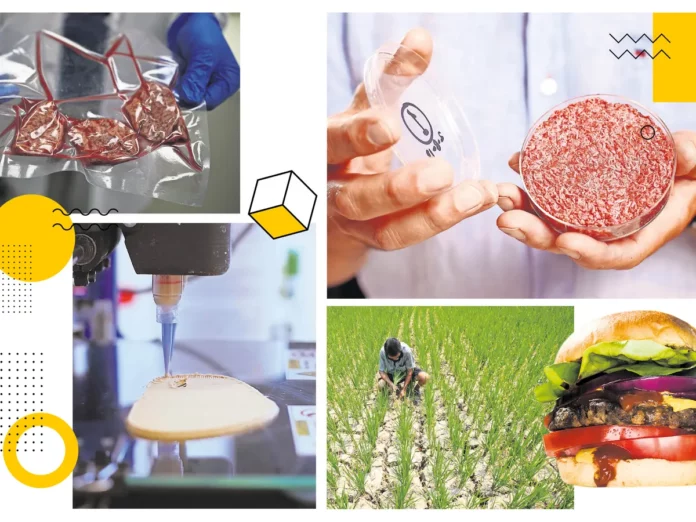Introduction:
As we look ahead to the future, it’s essential to consider how our food systems will evolve to sustain a growing global population and address pressing environmental challenges. By the year 2050, it is estimated that the world population will reach 9.7 billion people, necessitating innovative approaches to food production, distribution, and consumption. In this blog post, we will explore the future of food and delve into the trends and technologies that will shape our plates in 2050.
Sustainable Agriculture and Farming
To feed a larger population while minimizing the environmental impact, sustainable agriculture and farming practices will play a crucial role. Some key developments include:
Vertical Farming: Cultivating crops in vertically stacked layers to optimize space and minimize water usage.
Hydroponics and Aquaponics: Soil-less farming techniques that use nutrient-rich water solutions or fish waste to grow plants.
Precision Agriculture: Utilizing technologies like sensors, drones, and artificial intelligence to optimize crop yields and reduce resource wastage.
Indoor and Urban Farming: Growing food in urban areas, reducing transportation distances and providing fresh produce to local communities.
Cellular Agriculture: Producing meat, dairy, and other animal products through cell culture, reducing the need for traditional livestock farming.
Alternative Protein Sources
As demand for animal-based proteins increases, alternative protein sources will become more prevalent to alleviate environmental strain. Some noteworthy options include:
Plant-Based Proteins: Innovative plant-based products that mimic the taste and texture of meat, satisfying the demand for sustainable and cruelty-free alternatives.
Cultivated Meat: Lab-grown meat produced from animal cells, offering a more resource-efficient and ethical approach to meat consumption.
Insect-Based Proteins: Utilizing insects like crickets, mealworms, and grasshoppers as a rich source of protein, addressing sustainability concerns and providing a novel protein source.
Algae and Microbes: Harnessing the nutritional potential of algae and microbial sources to create protein-rich foods with minimal environmental impact.
Personalized Nutrition
In the future, advancements in technology and our understanding of genetics will enable personalized nutrition tailored to individual needs. This includes:
Nutrigenomics: Analyzing an individual’s genetic makeup to determine specific nutritional requirements and develop personalized dietary plans.
Wearable Devices: Integrated devices that monitor an individual’s nutritional intake, activity levels, and health data to provide real-time recommendations.
Functional Foods: Food products fortified with specific nutrients, bioactive compounds, or probiotics to promote health and prevent diseases.
Nutritional Supplements: Personalized supplements designed to fill nutritional gaps and optimize overall well-being.
Conclusion
As we look ahead to 2050, the future of food holds exciting possibilities. Sustainable agriculture practices, alternative protein sources, and personalized nutrition will revolutionize the way we eat, ensuring a sustainable and nourishing food system. By embracing these advancements, we can address global food security challenges, minimize environmental degradation, and promote healthier lifestyles. However, it’s important to prioritize research, innovation, and collaboration among stakeholders to bring these future food trends to fruition. Let us envision a future where our plates are not just nourishing but also sustainable, ethical, and inclusive. Together, we can shape the future of food and create a world where everyone has access to healthy and environmentally friendly meals.


